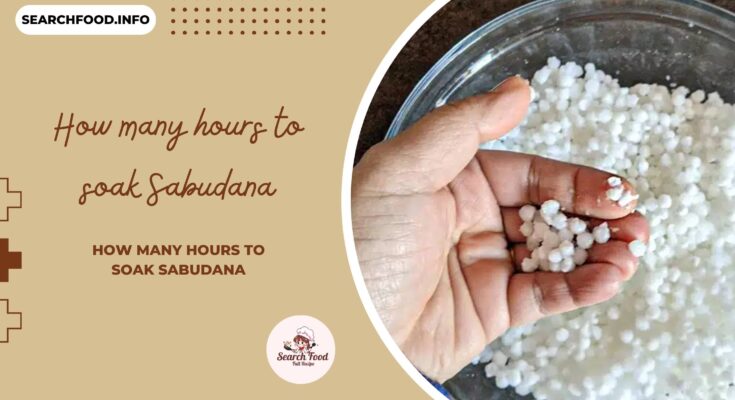Sabudana, those tiny tapioca pearls, are a delicious and versatile ingredient in many Indian dishes, especially during fasting periods.
But the secret to a perfect sabudana recipe lies in achieving the right texture – plump yet separate pearls that don’t turn into a gloopy mess. And that all boils down to soaking time.
How many hours to soak Sabudana
So, how long should you soak sabudana? The answer, like many things in cooking, isn’t a one-size-fits-all. Here’s what you need to know:
The Soaking Time Spectrum:
- 4-6 Hours: This is the most common range you’ll find in recipes. It works well for most commercially available sabudana varieties.
- Overnight: Soaking for a longer duration ensures the pearls are fully hydrated, leading to a fluffier texture. This might be preferable if you’re unsure about your sabudana’s quality.
- 2 Hours (or Less): Some finer or quicker-cooking sabudana varieties might only need a couple of hours to soften up. This is less common, but experiment if you find your usual soak time results in mushy pearls.
Factors Affecting Soaking Time:
- Sabudana Type: As mentioned above, the variety of sabudana you have can impact soaking time. Finer pearls will absorb water faster than larger ones.
- Desired Texture: If you prefer a slightly firmer texture in your final dish, a shorter soak time might be ideal.
Tips
- Water Ratio: Use just enough water to cover the sabudana. Too much water can make the pearls mushy.
- Drain Completely: After soaking, drain the sabudana thoroughly in a colander. Any leftover water can lead to a sticky mess.
The Finger Test:
Here’s a handy way to check if your sabudana is soaked through:
- Pinch a single pearl between your thumb and forefinger.
- If it mashes easily, it’s ready to cook.
- If it feels hard or breaks, it needs more soaking time.
By following these tips and understanding the factors at play, you can achieve perfectly soaked sabudana, ready to transform your favorite recipes into delightful dishes.




